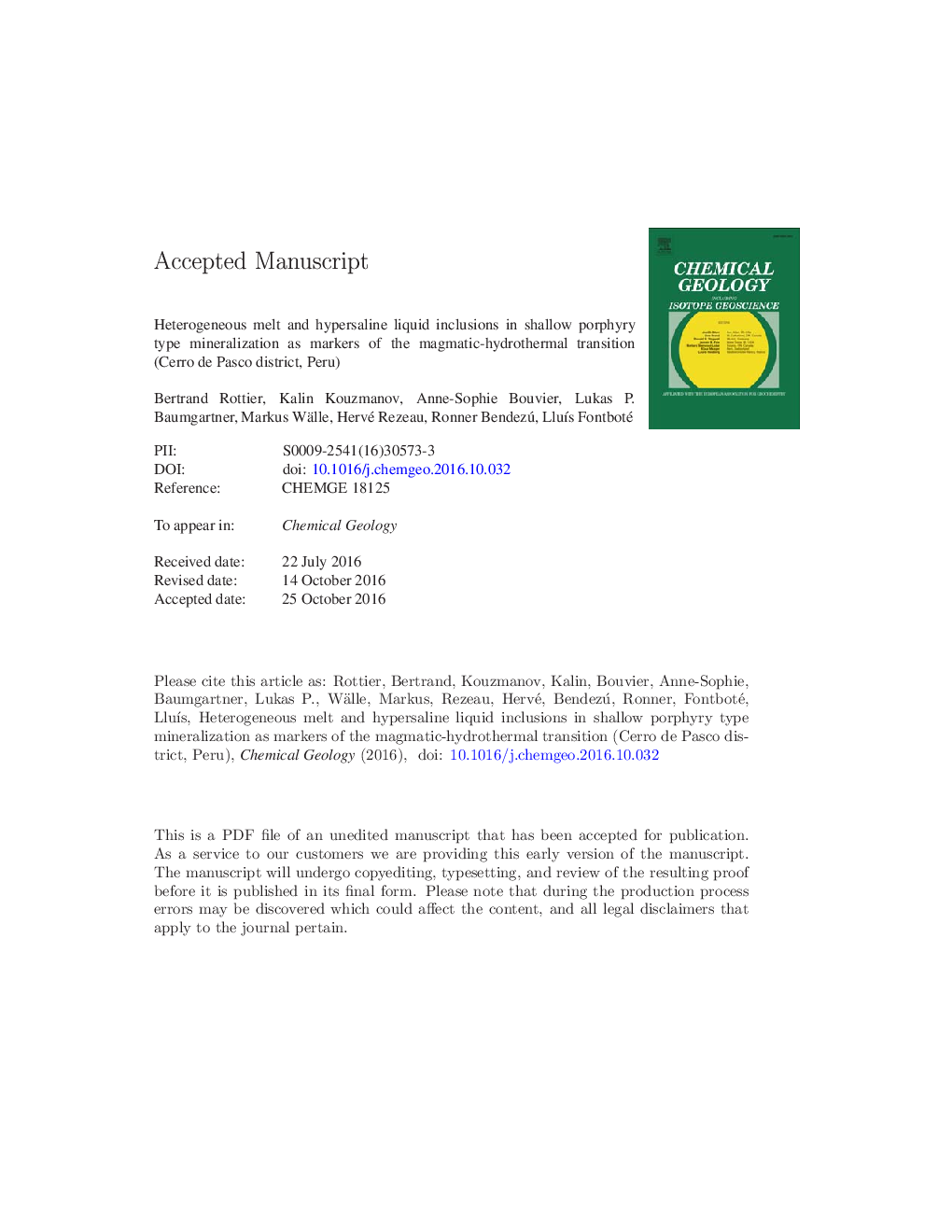| Article ID | Journal | Published Year | Pages | File Type |
|---|---|---|---|---|
| 5782984 | Chemical Geology | 2016 | 67 Pages |
Abstract
The banded porphyry-type veinlets record a multiphase history of formation with two successive high-temperature (> 600 °C) stages, followed by a lower-temperature (< 350 °C) stage. More than 90% of the quartz in veinlets precipitates during the first two high-temperature stages. Stage 1 is characterized by the entrapment in hydrothermal quartz of inclusions containing variable proportions of both silicate melt and metal-rich hypersaline (> 90 wt% NaCl eq.) liquid, hereafter referred to as heterogeneous silicate melt inclusions (HSMIs). The latter are rarely described in porphyry-type mineralization. We suggest that during stage 1, the inclusions result from heterogeneous entrapment of an evolved hydrous rhyolitic melt mixed with a hypersaline fluid phase at low pressure (270 bar) and high temperature (> 600 °C). The stage 2 is marked by the entrapment of metal- and sulfur-rich hypersaline liquid inclusions, with salinity around 70 wt% NaCl eq., originated from the adiabatic ascent of magmatic hypersaline fluids transferred from deeper parts of the system. The lower-temperature stage 3 is characterized by an important temperature drop from > 600 °C to < 350 °C as revealed by microthermometry of aqueous two-phase liquid-vapor (L-V) inclusions. Quartz textures revealed by SEM-CL imaging allow ascribing the sulfide precipitation to the low-temperature mineralization stage 3. In-situ SIMS 18O/16O isotope analyses of quartz across the veinlets are indicative of a magmatic signature of the fluids during the first two stages; while quartz from stage 3 has oxygen isotopic compositions suggestive of minor contribution of meteoric waters to a predominantly magmatic aqueous fluid (~ 10 vol.% of meteoric input), which probably triggered Cu-Fe sulfide precipitation in the stockwork. High metal and sulfur contents of HSMIs and hypersaline liquid inclusions determined by LA-ICP-MS are interpreted to represent the fluid composition prior to the main sulfide precipitation event. The similar Pb-Zn ratio of the bulk ore extracted from the epithermal ore bodies at Cerro de Pasco and the HSMIs and hypersaline liquid inclusions suggest a common source of the fluids associated with the different mineralization styles at Cerro de Pasco.
Related Topics
Physical Sciences and Engineering
Earth and Planetary Sciences
Geochemistry and Petrology
Authors
Bertrand Rottier, Kalin Kouzmanov, Anne-Sophie Bouvier, Lukas P. Baumgartner, Markus Wälle, Hervé Rezeau, Ronner Bendezú, LluÃs Fontboté,
